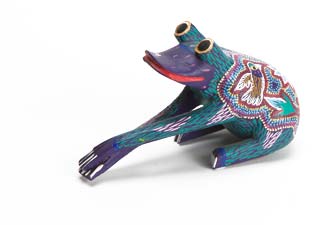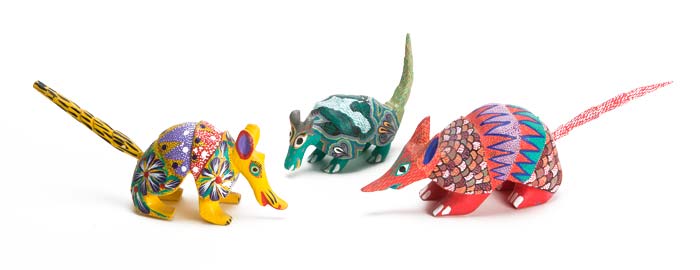Oaxacan Wood Carvings are a magnificent expression of Mexican Folk Art. The talented carvers of Oaxaca create, entirely by hand, wonderful sculptures made from copal wood and their ingenious shapes with amazing patterns and colors have captivated collectors world wide. These remarkable wood carvings are also known as alebrijes for their similarity with the fantastic paper creatures made in Mexico City. For centuries the inhabitants of the Valley of Oaxaca and in particular the Zapotec civilization carved splendid wooden sculptures that are now in museums or adorning colonial churches. As the modern legend goes, it was Manuel Jimenez who popularized this craft. He is considered the great master of Oaxaca wood carvings, and it was his work that was first noticed by traders and collectors of Folk Art. His success inspired others to follow in his foot steps. Nowadays there are many talented master wood carvers in Oaxaca, particularly in three villages: Arrazola, San Martin Tilcajete and La Union. Using the soft wood of the copal tree abundant in the area, they carve with machetes and knives, beautiful figures that they later paint in brightly colored designs. Through their never-ending creativity and imagination, wood is transformed into mermaids, wild animals, fantastic creatures, masks, Virgins, devils, Santos and angels! It is fascinating to see how each artist has developed a unique style. |
Oaxacan Mexican Folk Art |
||||
|
|||||
unknown | Dog wood | 304.16 |
|||||
 |
|||||
Armando Carrillo Arrazola | Frog wood | 306.16 |
|||||
 |
|||||
Armadillo's | unknown 307.16 | Armando Carrillo Arrazola xoxo 305.16| Pepe Santiaso 308.16 |
|||||
© 2016 Inland Empire Museum of Art |
|||||

